Five Big Video Trends

Video is now the most effective tool for engaging your audience online. And it's changing.
Here's what you need to know.
Who are we to write a report on video trends? Well, this is all we do. GoodChat live and breathe social video every day.
GoodChat make quality video for people doing good in Australia. Our videos are tailored to create buzz, raise money, and inspire people to take action. We respond quickly to trending moments, and craft evergreen videos for the life of a campaign.
Many of our videos have exceeded even our own lofty expectations: our Broken Hill Solar Farm Video for the Climate Council attracted 4 million views, our anti-bullying campaign for the NSW Government had 52,000 shares and 3.5 million views, and our healthy food campaign for NSW schools had 3 million views (check out those and others at goodchat.tv)
We know that social video is a beast that changes its face each year. New tech, new platforms and new audience habits mean we have to drop some of what we used to know to make room for new video trends. It's an endlessly fascinating process, but if you don't keep up you can get left behind.
We hope this report is super helpful for all the glorious stories you plan to tell.
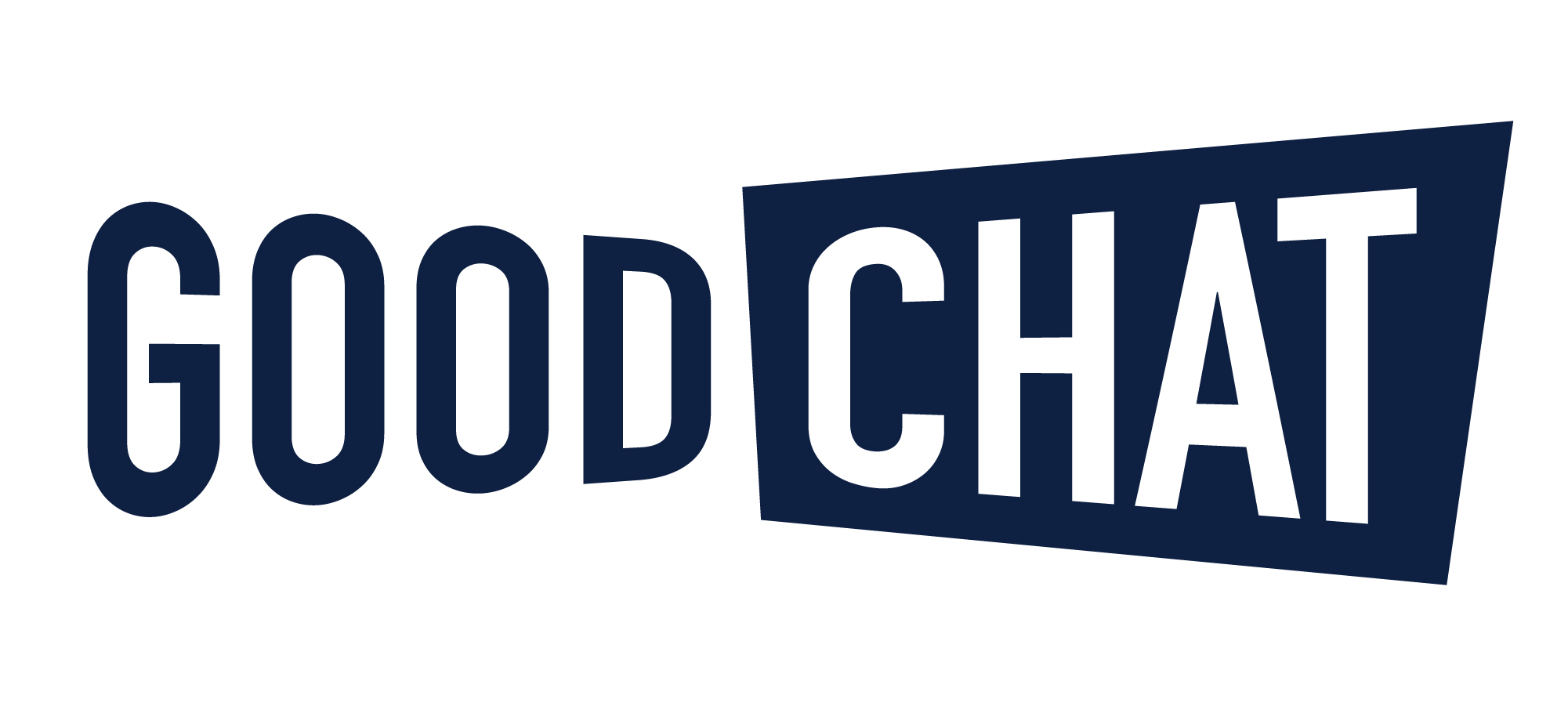
- People are 95% more likely to retain information from a video, compared with 10% for text (CISCO)
- Views of branded video content have increased 99% on YouTube and 258% on Facebook between 2016 and 2019 (WYZOWL)
- By 2021, 82% of web traffic will be video (CISCO)
Campaigners and marketers used to think of video as a side note. If they wanted to use the moving image, they made big, expensive TV commercials like this.
But then… YouTube happened. No one could have predicted how YouTube would change the face of video in 2005. Its popularity has meant your audience doesn't just expect video - they demand it. Video itself is the mega-trend in digital communications for the next decade. It's shifting from being a side dish (complimentary visual tool) to being the main piece of content. And it will just keep growing. Why?
It's attention-grabbing, memorable, shareable and engaging - no other format can create an emotional connection and reaction like video.
The Five Big Trends
We'll go through five main areas in which video is changing.
1. Platforms
Where should we spend our time with video?
2. Content
What kind of stories should we be telling?
3. Format
What are the new kinds of videos we can make?
4. Distribution
What's the best way to get our videos to our audience?
5. Storytelling
What's the new way to tell stories?
Trend 1 | Platforms
Social platforms be multiplying
In the past, if you wanted to know where to upload your video, the answer was easy. YouTube. Always YouTube. Then Vimeo, YouTube’s arty cousin came to the party. Then Facebook turned up. Vine came and went. Today we have Instagram (and Insta Live, Insta stories, IGTV... you get the idea) SnapChat, WhatsApp, Twitter, Lasso and of course Tik Tok - the most recent to explode and the one on everyone’s lips.
With platforms multipying - and sub-dividing - where do we put our energy?
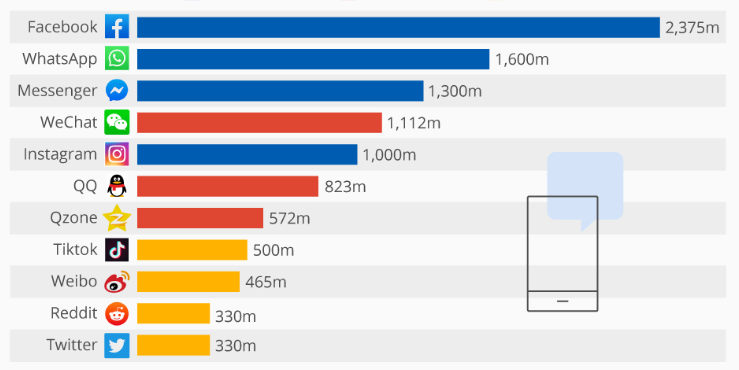
Monthly active users on major social media platforms, July 2019
Let's talk Tik Tok
At least once a week, our clients ask if they should be on Tik Tok. And with good reason. Tik Tok is the new kid on the social block, and already has 500 million monthly users. It was the most downloaded app of the year in 2019.
TikTok doesn’t necessarily bring anything new to social media, but it unites the most popular features under one app, from Vine's video snippets, Instagram's scrolling interface and influencers, Twitter's trending hashtags, the performance elements of YouTube, and the irreverent humour of Snapchat and Tumblr. The platform is young but rapidly growing and it's starting to get the attention of brands and advertisers So what exactly is it?
Tik Tok is a video-first platform, where users generate short-form (and very watchable) content like this. It's lo-fi, authentic, and interactive - mostly via a series of trending #hashtagchallenges, challenging users to film themselves doing something to a theme, such as the #somanytears or #truthordare.
Half of all users are under 24 (hence trending hashtags such as #okboomer), which has generated a new generation of influencers and viral memes. It's a refreshingly authentic antidote to the polished world of sponsored, filtered instagram content, where self-expression and creativity trump airbrushed glamour. But beware! Kids smell bull a mile off and anything too contrived can quickly backfire.
Should you come to the party?
Brands can quickly reach their target audience via in-feed ads, brand takeovers, filters and stickers - but these all come at a price. However there's already been some great success stories of organic reach by individuals and organisations using the platform to raise awareness of a cause.
Feroza Aziz managed to have a 40-second video spread across the platform by disguising it as a short make-up tutorial, calling for an end of the forced detention of muslim minorities in China. The clip was watched more than 1.4 million times, and liked 500,000 times on the app before being removed (Tik Tok is actually Chinese owned).
In May, The United Nations’ International Fund for Agricultural Development (IFAD) created a global dance challenge, asking young people to make their moves matter and tag #danceforchange. The a 15-second dance videos in support of creating opportunities for rural youth in some of the world's poorest countries garnered more than 100 million + views across the platform.
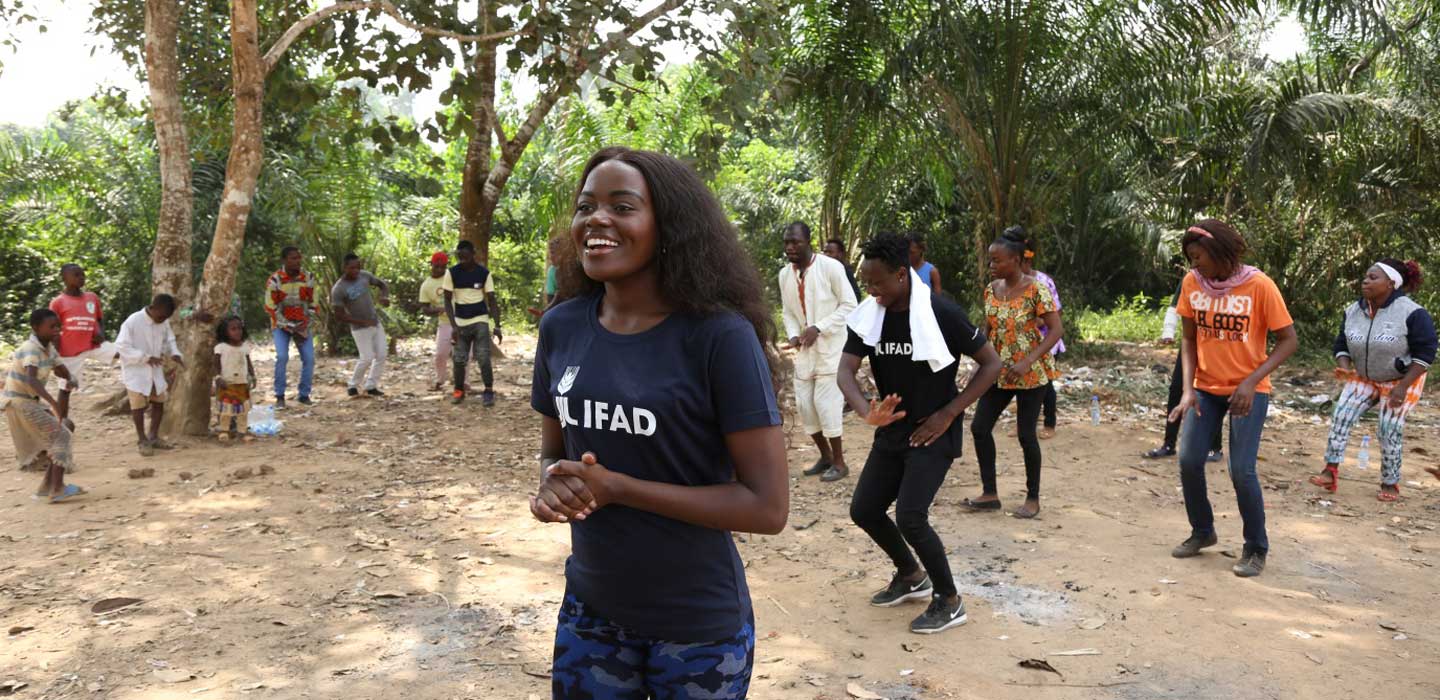
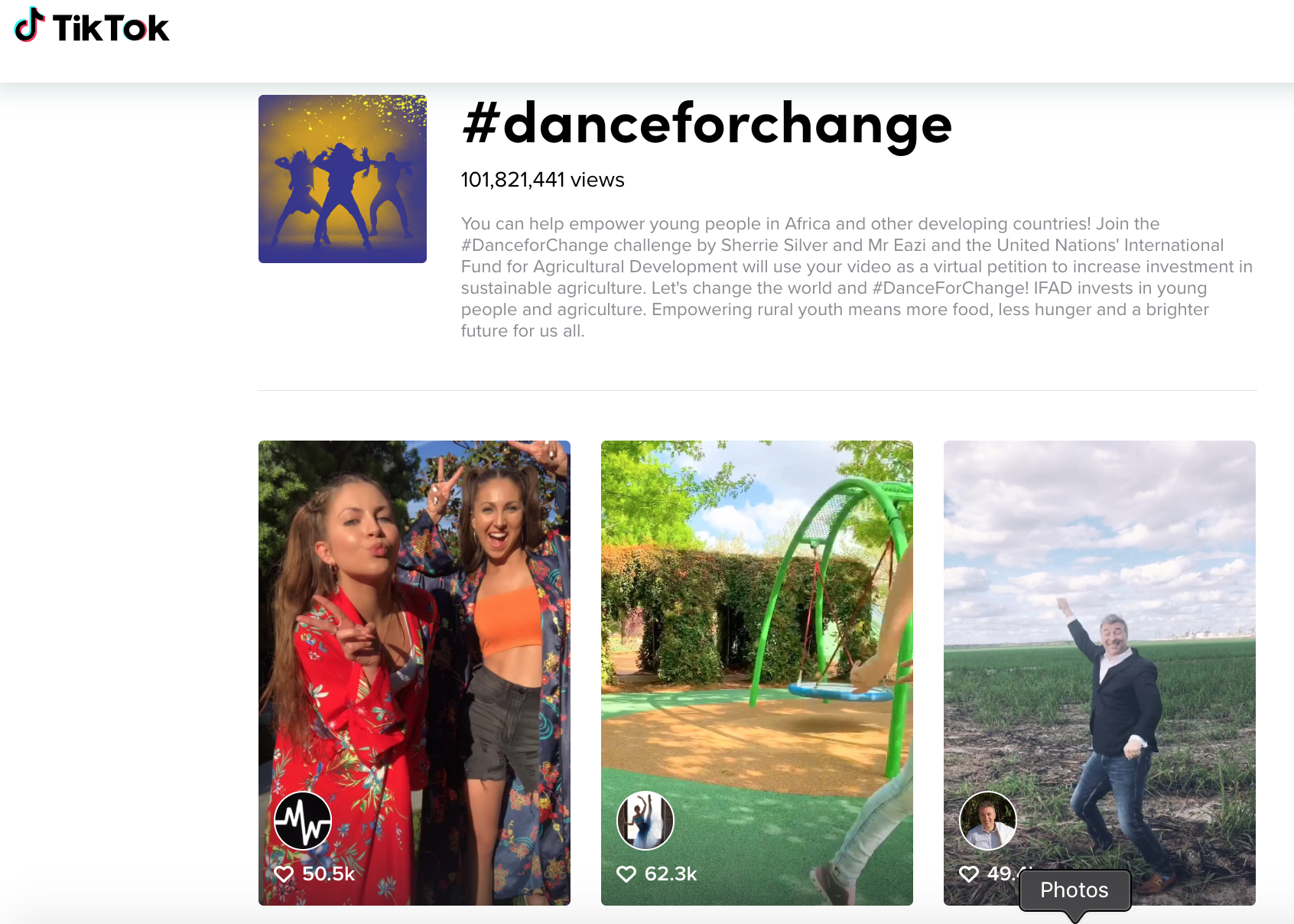
So in short - why not? Experiment with some authentic, fun content, and maybe a branded hashtag challenge or find a brand-aligned influencer who is killing it.
But, like with any social strategy, ensure it's intentional and strategic - think #qantasluxury #yourtaxis crowd-sourced hashtag fails that backfired.
YouTube
More video is consumed on YouTube than any other social network. Over 1 billion hours of video are watched daily on YouTube by 2 billion users, in 76 languages.
People head to YouTube primarily to be entertained, and discover, but increasingly, a large majority are using the platform for education and problem solving - in fact, searches of "how to" videos are growing 70% year on year and don't look like slowing down anytime soon. Fixing a leaky tap or ukelele tutorial anyone?
65% of people use YouTube to help them solve a problem, and 86% of viewers say they use YouTube to learn new things. It's ideal if you can create video content that helps and educates your audience
Are your videos searchable?
YouTube is also the world's second biggest search engine, after Google (YouTube's owners, of course). This means it has a huge reach but you are also vying for many other eyeballs... and people often aren't searching for campaign or charity videos.
We often hear from clients that they don't get the reach they were hoping to on YouTube. Often they haven't been optimised for search - things like metatags, keywords, and including your transcripts are all great ways to get found. Here's some easy ways to get started optimising your YouTube videos.
What about ads?
YouTube is a great place to get your ad in front of new eyeballs, and there's lots of choice depending on what you're trying to do. What are the options?
- Skippable video ads | which can be any length, but skipped by the viewer after 5 seconds. You only pay if someone chooses to watch at least 30 seconds or clicks through.
- Non-skippable pre-roll ads | which can be up to 15–20 seconds long (depending on where the viewer is based) and - as you might expect from the name - can’t be skipped!
- Bumper ads | these are a maximum of 6 seconds and can’t be skipped by the viewer. It’s a great way to jump in front of your audience, get your main value proposition across as quickly as possible, without being overly disruptive or irritating to their overall experience.
Bumper ads can be an artform in themselves - check out these great ones from Gumtree and Airbnb.
Instagram just keeps growing - and subdividing - Instagram LIVE, Stories and IGTV all gained traction this year and made video marketing more accessible for small businesses and organisations on tight budgets.
Instagram now has 1 billion active users - with beautiful, aspirational and highly visual content, it's where people go to discover. But it is increasingly brand-saturated and can be hard to convert to action. It has been linked to anxiety and mental health issues, prompting Instagram (and its parent company Facebook) to recently remove the numerical tally of likes. It will be interesting to see how this plays out with brands and influencers.

The best place to get traction? Stories.
Instagram Stories allow marketers to deliver interactive, clickable content and narrative to their customers. Using visual content and videos, they can easily capture the attention of Instagram’s scrolling users. And with the majority of us consuming video on the go, the vertical format is ideal for mobile devices.
This storytelling feature is something that gained a lot of traction in 2019, with the number of active users of Stories reaching a whopping 800 million. Some our favourites include - ABC Australia, NY Times, City of Sydney, The Climate Council
Despite slowing growth and controversies, Twitter is still ideal for joining a conversation and reaching new audiences via trending content. It's not as well-known for video, but with video tweets retweeted 6 times more than static content, maybe it should be!
Why is that? There’s research showing people feel like Twitter video is organic in their social feeds and they respond better to it.
SnapChat
Still the young, fun cousin of the social world, SnapChat is interactive, authentic and loved for it's impermanence, but hasn't quite lived up to the hype for brands who find it hard to enter and create and track impact.
Facebook is still the biggest and most dominant social media platform, despite scandals and privacy issues. It continues to be the best choice for cause-based organisations, and it's where most of our videos get seen.
Why?
- It’s the platform for taking action and communicating
- It’s more immediate - can find people in their feed
- Audience skews older - with time to watch, support and donate
- The audience expects to hear from brands/orgs more than other platforms
What is the Ideal length for a Facebook video?
... is the million dollar question we get asked at least weekly.
The classic wisdom is the ideal length for Facebook video is 60 seconds (with shorter better for Instagram, and longer for YouTube).
But recently Facebook said they now place weight on video completion - and longer videos that get finished get a higher ranking. In their words: the best length for a video is whatever length is required to tell a compelling story that engages people, which is likely to vary depending on the story you’re telling.
Those pesky algorithm changes
It feels like Facebook changes how they prioritise content as often as we change our underwear. Algorithm changes to content, format, length, engagement are frequent and often confusing, and it makes organic content harder and harder to get reach.
When we first began making online video 20% of our clients' followers would see a post. Now it’s more like 6% - and shrinking.
This means that in order to get in front of your audience, you’ll need to invest in paid, or... create highly shareable video!
No matter what the algorithm flavour of the month, Facebook will always reward videos that get people talking, tagging and sharing.
We've had lots of success hitting the magic million plus viewers organically on Facebook through videos that surprise and create discussion, like this series of videos (4 million views, 50k + engagements).
GoodChat's Recommendation
Facebook is still your best bet. It's the ideal platform for targeting, campaigns, conversations and communities.
But YouTube is still definitely important - and there are many ways you can optimise videos to be more searchable.
Trend 2 | Content
Good is the new cool
In the 1920’s we wanted enjoyment.
In the 1940’s we wanted power.
In the 1970’s it was about rebellion.
In the 1990's we rejected commercialisation.
In 2010’s we wanted control.
Now, in the 2020's, we feel like our leaders can't be trusted, and we're moving into the rebellion era again.
Ogilvy says in their Trend Report 2019 that we are in the “Decade of Do”. People are frustrated with their governments. They feel they are no longer represented. So now we are looking to ourselves, and to business, and our organisations, to do good things. We want to do good things for the community, the planet, etc.
"This is our turf. Claim it."
How to become a better person
We used to go to the internet to read. Then we went on it to watch. We wanted to be entertained or to be voyeurs. Now we go to the internet to learn - how to be better humans and improve the world.
This is your turf. And it may inform your campaigns. They want tips on how they can be better. How can they have a lighter carbon footprint? How can they improve the mental health of their children?
Here's how not to do it.
This Pepsi video was roundly slammed for being inauthentic, and for hijacking important political movements for commercial gain. It also doesn't make much sense.
Here's how we do it.
This video was viewed over 4 million times, was featured on The Project, has shaped the conversation around bullying and has now been implemented as a program in schools across Australia.
GoodChat's Recommendation
Be authentic about your "do-gooding". If you work in this space, help your audience with tips on how they can genuinely help other people or the planet.
Trend 3 | Format
Let's get up close and personal
Just like platforms, the types of video that are out there are multiplying too. At the turn of the last decade, many forecasters had us walking around in wearables, watching video through Google Glasses and living in a semi-virtual reality world.
The reality has been less about tech and more about really engaging video.
While Virtual Reality (VR) can create buzz, and there’s been some cool stuff happening in the VR space for social change videos (e.g. Oxfam’s Evelyn's story), VR is still fairly niche and it's use has plateaued - something to do with having to don a headset every time you want to watch, perhaps?! It's a bit the same with 360 - high novelty factor, but hasn’t really become mainstream.
Here are the biggest 3 emerging format trends we think will have the biggest impact on campaigners, fundraisers and organisers.
Interactive Video
Traditional video, or linear video, is the type of video you’re probably most used to. You know the drill - you click “play” to start to the content, with the options to pause, rewind, fast forward and restart. But aside from those limited functions, there isn’t much you can do to interact with a linear video. Interactive video, however, gives the viewer the ability to interact with the video content itself through tools such as hovering, hotspots to other links, 360 deg views, augmented reality, camera input, data fields, polls and quizzes. Users can click, drag, scroll, gesture and complete other digital actions to interact with the video’s content, similar to web content.
From big budget streaming platforms (such as Bear Grylls and Black Mirror's choose your own adventures) to social media features such as camera effects and polls, these tools create a more fun and engaging experience for the viewer and turn a potentially static video into something more memorable, enjoyable and interactive.
Check out this brilliant video from Noah Levenson, a former MTV creative executive. It uses your facial expression to determine what you do and don’t like, from pizza to Kanye, to demonstrate how big tech are using your data and show us not what we see, but what the machine sees.
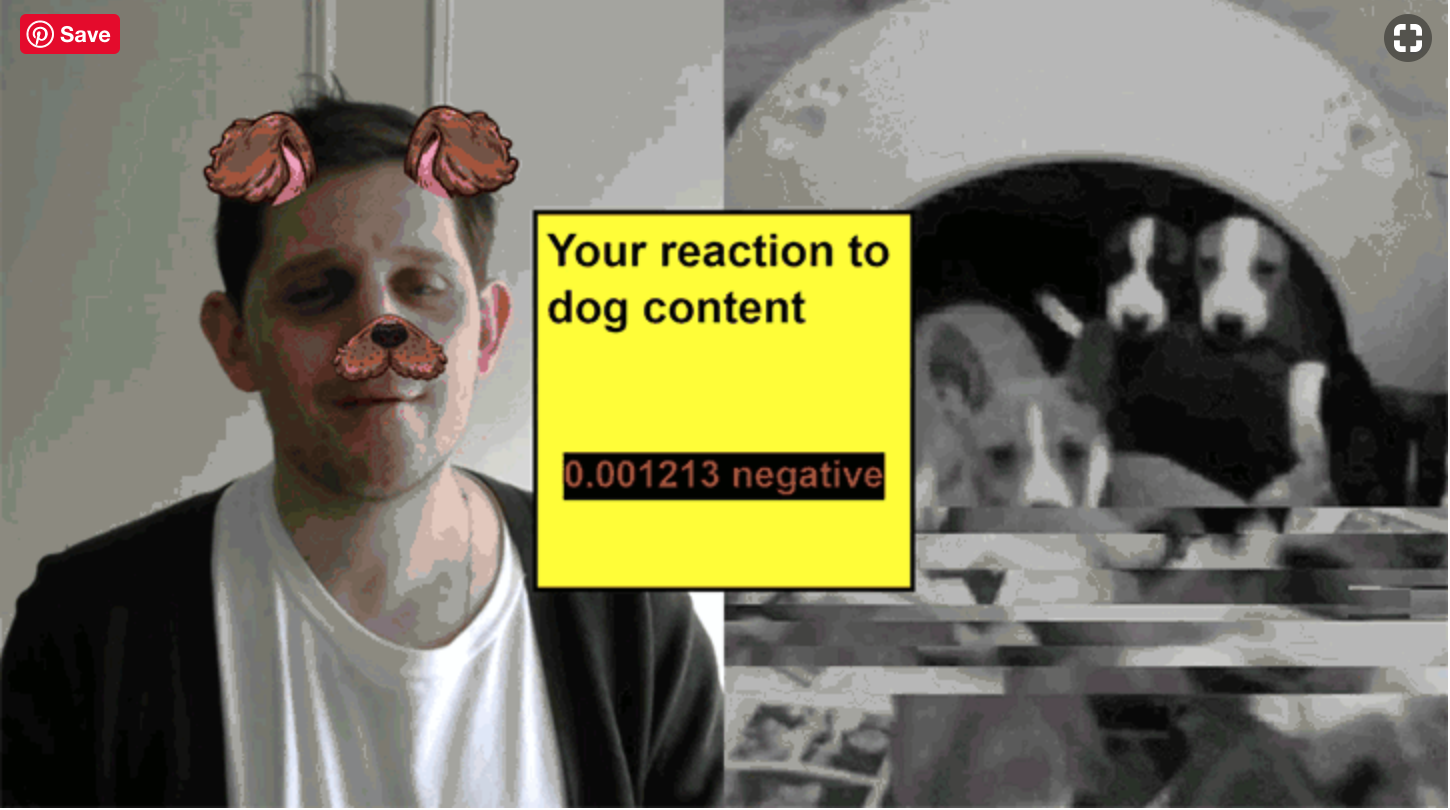
The Epidemic was another brilliant interactive video campaign from 2019, the result of a partnership with Monica Lewinsky and BBDO, where the viewer transforms into the victim.
In the video, viewers are presented with an average American teenager, Hailey, suffering from symptoms of a mysterious illness. After watching the film, viewers are prompted to enter their phone number. They watch the clip again, this time receiving the same bullying text messages as Hailey receives throughout the story.
While still quite nice, we're also seeing a rise in Augmented Reality (AR) interactive video - a blend of the natural and virtual world. It's uses are emerging in everything from retail, to navigation and gaming.
With AR, virtually anything can be placed in the real world, which has inspired some creative campaigns for social change. For example, artist Asad J. Malik placed hologram images of refugees from the Syrian war into various locations across the United States.
Why interactive?
Interactive video has quickly become a well-established and widely used marketing tool, as it is:
- Engaging + Memorable | Active instead of passive, so your audience is less likely to get distracted.
- Popular | Fun, add moments of delight. Audiences love interacting.
- Trackable Impact | Not just views but conversions. With interactive video, you can monitor clicks, paths and form fields.
Those numbers will continue to increase as brands and organisations explore different tactics and figure out which resonate most with their target audience.
So should you get involved?
Sure! You could begin quickly and inexpensively by playing with SnapChat geofilters, scavenger hunts via off-the-shelf apps, or even build an app. Or you could make a viewer experience in 360 or virtual reality, and film the amazing real story or social experiment of people's reactions to what they see, like this brilliant virtual equality campaign.
But like most shiny new tech, be careful of creating interactive video just for sake of it - like a website or app, it needs to be intentionally designed with a broader video strategy.
Personalised Video
Personalisation is a big trend in general, from gifts to apps, and video is no exception. Who doesn't like to feel a bit special?!
Personalised videos can be customised to each viewer using elements such as name, profile image, or data embedded directly into the video. Tailored videos are more engaging, and more memorable.
They can be automated with technology - think the cheesy Facebook friendship ones - or this brilliant animation from Nike - or made individually for big impact like Charity Water.
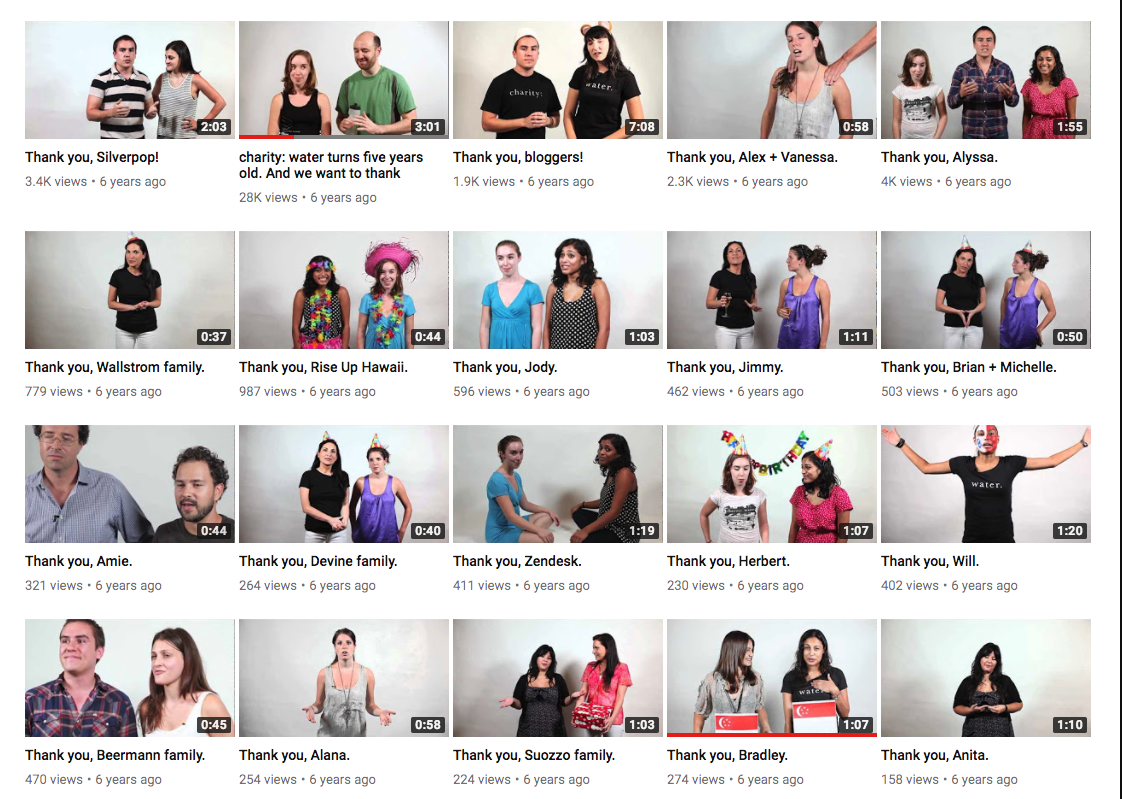
They're ideal for nurturing supporters, thanking key donors, and demonstrating impact
However, they can still be either time- intensive (like Charity water) or cost-intensive (like Nike) so it pays to have a clear strategy and projected return on your investment.
Vertical Video
Vertical video is a trend that's dividing people. You may have heard of Quibi - the $2 billion mobile-only streaming video service that debuted in 2020. Most of the videos would be vertical. Steven Spielberg himself announced he was onboard to produce and write a series.
Quibi folded after 6 months!

Ok, so Quibi wasn't a hit. But does that mean vertical video is out? Nope.
Vertical video is great for things like Insta stories, where you can embed links, which is great for distribution.
Increasingly, we're getting asked to create square and vertical versions of our videos for social feeds, and it makes sense. The majority of videos are now watched on mobile, (especially by Gen Y and Z) and vertical video dominates more real estate in a social feed on a screen held vertically.

While the vast majority of videos are still landscape - we see in landscape, and video reflects this - vertical is a format that is not going anywhere.
When does it work?
Vertical is ideal for when we want to get personal and real. It is not a substitute for good storytelling with high production values, which is still by far the most used and expected style from organisations. But it is good for intimate, behind the scenes content - such as “Content” from the ABC.
Vertical is also great for Facebook and instagram stories, and for targeting a young audience (like this City of Sydney Climate strikes excerpts of their story).

GoodChat's Recommendation
Experiment! With interactive and personalised, but with an intentional strategy not just for the sake of it. Play with vertical for behind the scenes stuff, and use it for stories.
Export for vertical (and square) for explainers and titles-based videos that are made for social and need maximum screen space.
Don't be afraid of low fi - people expect it with vertical. As long as it's intimate and personal. The rest of the time make it beautiful/high production values. People can simply... turn their phones.
Trend 4 | Distribution
The Content Stack
Videos optimised to meet the needs of each individual social media network as well as a variety of mobile devices will continue to be one of the most important marketing trends. Platform-specific content like square videos for Facebook or vertical videos for Instagram Live enhance the viewer experience, stand out visually in feeds, and are more likely to enhance engagement numbers.
One size fits all doesn't apply any more. We need to re-purpose it per platform.
Videos are big investments so we recommend getting as much mileage out of each shoot / animation as possible.
Enter the content stack, where the hero video becomes a full campaign with up to 10 products.
Like the time we took Nick Boshier and Tim Longhurst - a comedian and a futurist - on an electric car road trip. We made the 4 1/2 minute hero video, which went really well, then a 60 second titles-based explainer for Insta and ads.
It makes the most of the initial shoot and re-purposes some of the different key messages and best footage into new products - because every dollar has to count.

A typical Content Stack
Video | Length | Purpose | Platform |
Hero Video | 2-3 minutes | The masthead video. | Website, YouTube, Live Events, Facebook |
Facebook cut | 60 second | A shorter version of the purpose and vision with most of the key messages, to engage new audiences on social media | |
Instagram cut | 45 second | A shorter version of the purpose and vision with most of the key messages, to engage new audiences on social media | |
Twitter cut | 30 second | A promo with 2-3 key messages to direct traffic to website for more information | |
Pre-Roll | 15 second | Key shots/story | YouTube pre-roll, Facebook banner |
Bumper | 6 second | Teaser | YouTube pre-roll, Facebook banner |
Stills | NA | Photos for campaign assets | Website, social platforms, EDMs etc |
Gifs | 5 secs | Cheeky and quick GIFS | |
Digital Marketing Suite | Various | A suite of assets to be used in your digital marketing campaign. |
GoodChat's Recommendation
One input, lots of outputs. Get as many videos, images, graphics and gifs as you can out of the video.
Trend 5 | Story
Good storytelling
This is a crowded market. Good storytelling cuts through.
Good storytelling. It's the oldest trick in the book. This will be a trend, but it's not new. This is universal. We can tinker with platforms, formats and algorithms, but by far the most important thing is good content. It’s the only thing that cuts through. So how do you tell a good story? We run by the rule of... LOUIS.
Every video must have one of these things.
Laugh | laughter is usually a path to emotional connection. Breaks down the barrier. Helps us share.
Outrage | one of the best ways to get people to act. Works really well with urgent
Urgent | one of the best ways to get something shared - riding the moment, being a part of trending conversations. The philosophy behind our rapid response explainers.
Inform | tell people what they didn’t know, especially about a topic that everyone is interested in. Positions the client as the expert.
Surprise | the king of louis. Try to make everything we do surprising. It is most effective in getting people to engage and share.
So, good storytelling isn't new. But, the way we tell stories is changing.
Traditional storytelling in film used to look like this. We’d gradually build to a climax, with twists and reversals and exposition before the big climax. Basically, the audience had to stick around if they wanted their dessert. It’s still the way most movies are made these days.
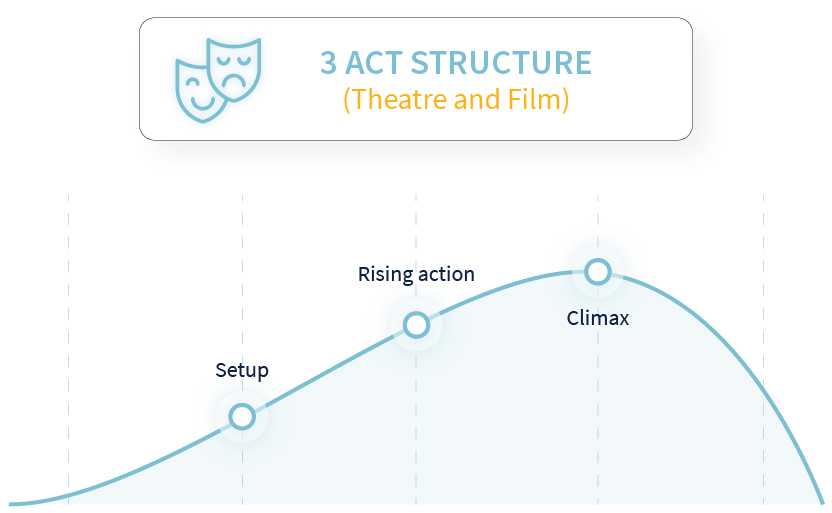
But this structure doesn't work for advertisers. So they came up with this structure:
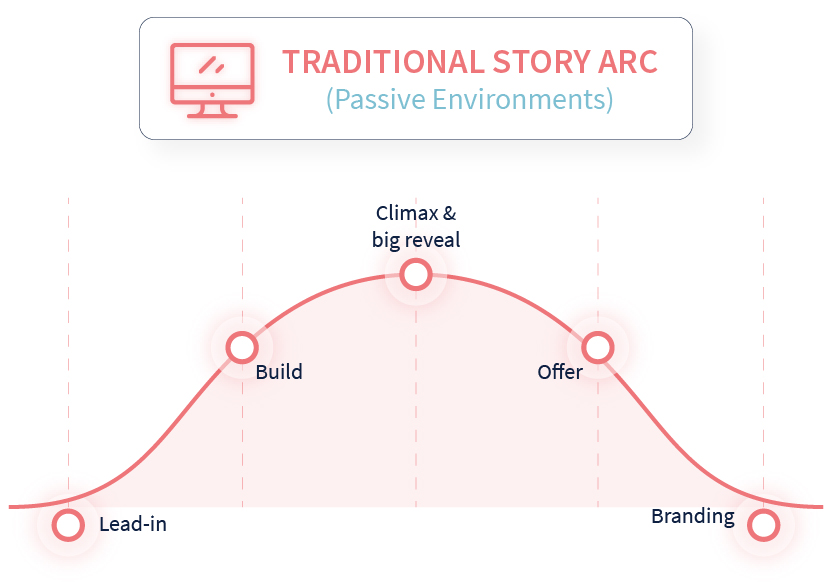
This structure caters to the “passive audience”. Basically, watchers of television. Before smartphones and tablets and social media, television-watchers had to sit on their sofa and endure the ad. Advertisers had time to get your attention.
Now, we have to work harder. We know we have about 3-5 seconds to implore our audience to keep watching. Which is why our structure now looks like this.

We have to give them their dessert first. Some way of earning an emotional response within the first 3-5 seconds. We need them to feel outraged, or to laugh, or to stoke their curiosity. This structure is hard because it goes against our natural storytelling instincts. Think about how a joke is crafted. Set up … pay off.
The way we often do that at GoodChat is to start with an intriguing stat. Or we tell a bit of the story, and then leave some mystery, like in our Broken Hill story for The Climate Council:
Another way to do start high, especially with longer videos, is to create a teaser trailer.
These trailers summarise the entire video in the first few seconds, so the audience can then decide if they want to keep watching. They don’t give away the entire story but instead tease the audience with enough information to intrigue them. It’s basically like a taste-tester for the video, like this one for GetUp!
Teaser trailers are particularly important when creating videos for social change. With the saturation of video on social media, we found our videos needed teasers to hook our audience so they’d watch until the final call-to-action (and then hopefully sign the petition or join the campaign!). Our videos were often long, with a lot of information to digest, so the teaser trailer was way of easing in the audience and convincing them to watch until the end.
Just remember, we only have 3-5 seconds to hook our audience, so you have to start high. Once we have their attention, we can then craft our story, and still build to a satisfying climax.
GoodChat's Recommendation
Get to the point quickly, and make sure you're surprising or intriguing your audience within the first 7 seconds.
Want your video to cut through? Let's chat.
hello@goodchat.tv
